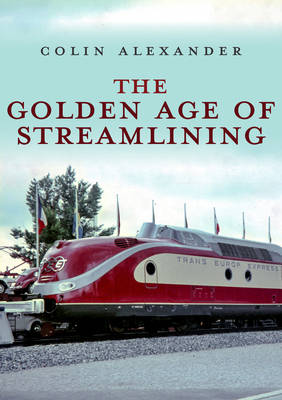
- Afhalen na 1 uur in een winkel met voorraad
- Gratis thuislevering in België vanaf € 30
- Ruim aanbod met 7 miljoen producten
- Afhalen na 1 uur in een winkel met voorraad
- Gratis thuislevering in België vanaf € 30
- Ruim aanbod met 7 miljoen producten
Zoeken
Omschrijving
Between the two world wars there was a golden era of industrial design when the benefits of streamlining were realized, allowing for reduced wind resistance, faster transportation, and a more efficient economy. The Art Deco-influenced style was also a huge public relations exercise in the glamour-obsessed 1920s and 1930s. Its most obvious manifestations were on the railways, with beautiful streamlined locomotives in daring color schemes on prestigious named expresses, especially in Europe and North America. They included the Fliegender Hamburger diesel train in Germany, the American Mercury trains, and of course Sir Nigel Gresley's A4 Class, on which the streamlined casing and internal streamlining allowed Mallard to break the world speed record. The idea of streamlining made even more sense in the air, where the great airships were crossing the Atlantic, and aircraft like the Douglas DC3 cut through the air more easily than anything before. Meanwhile, on the world's roads, buses and cars lost their perpendicular looks and marques like Cord and Bugatti led the way with increasingly aerodynamic, wind-tunnel-tested profiles. Designers like Raymond Loewy, as well as designing streamlined locomotives, began to apply the same style to products for which wind resistance was irrelevant, such as buildings, refrigerators, and even pencil sharpeners. This book intends to tell the story of the streamline era, its designers, its successes and failures, its inspiration, and its legacy.
Specificaties
Betrokkenen
- Auteur(s):
- Uitgeverij:
Inhoud
- Aantal bladzijden:
- 96
- Taal:
- Engels
Eigenschappen
- Productcode (EAN):
- 9781445693347
- Verschijningsdatum:
- 15/12/2021
- Uitvoering:
- Paperback
- Formaat:
- Trade paperback (VS)
- Afmetingen:
- 160 mm x 231 mm
- Gewicht:
- 340 g

Alleen bij Standaard Boekhandel
+ 44 punten op je klantenkaart van Standaard Boekhandel
Beoordelingen
We publiceren alleen reviews die voldoen aan de voorwaarden voor reviews. Bekijk onze voorwaarden voor reviews.








